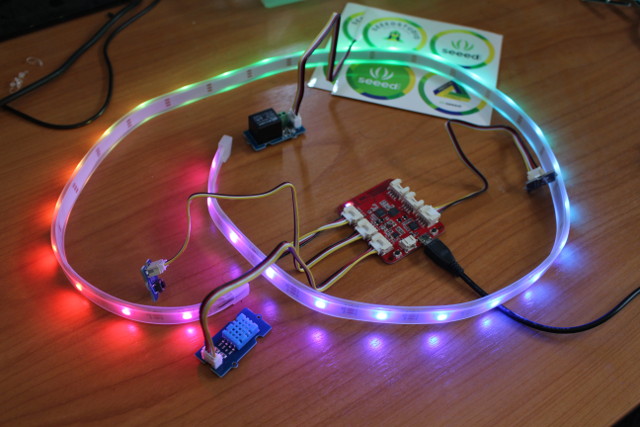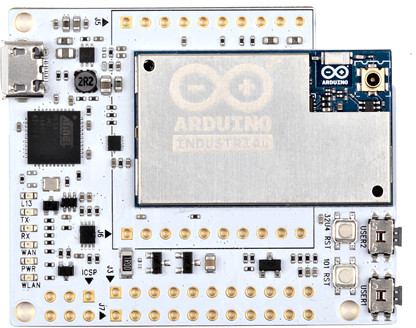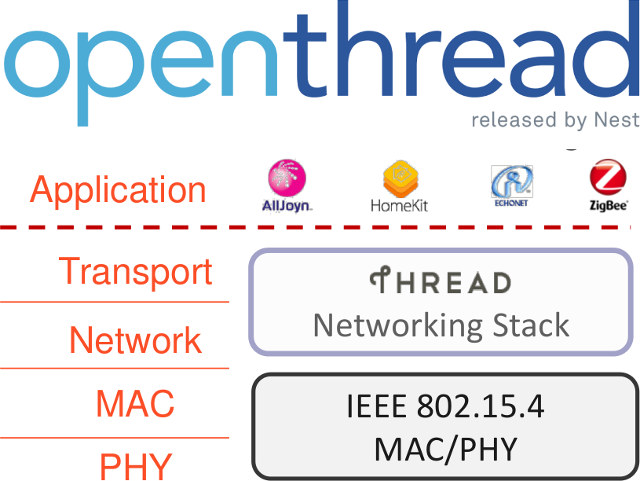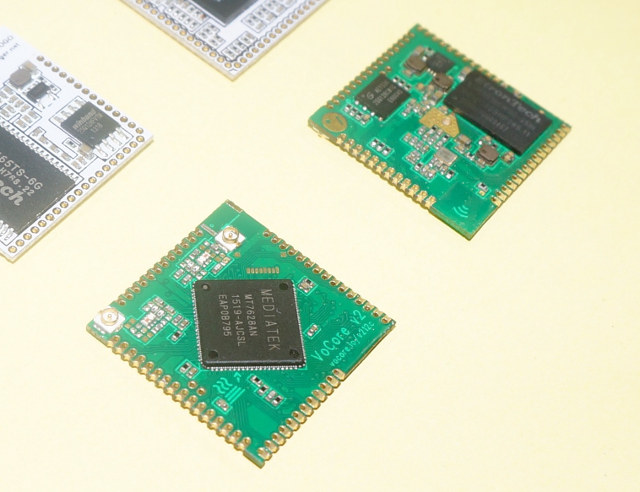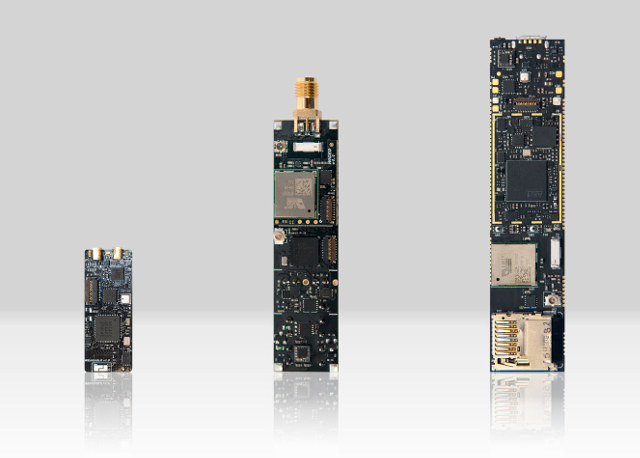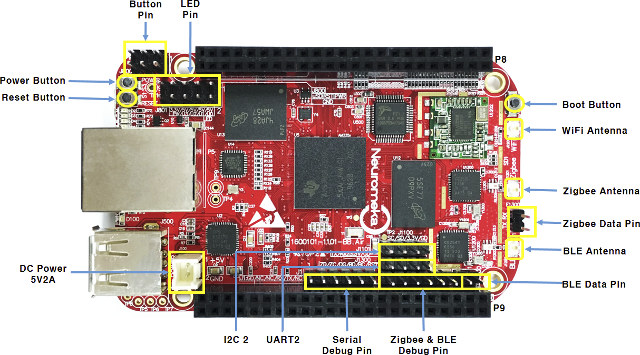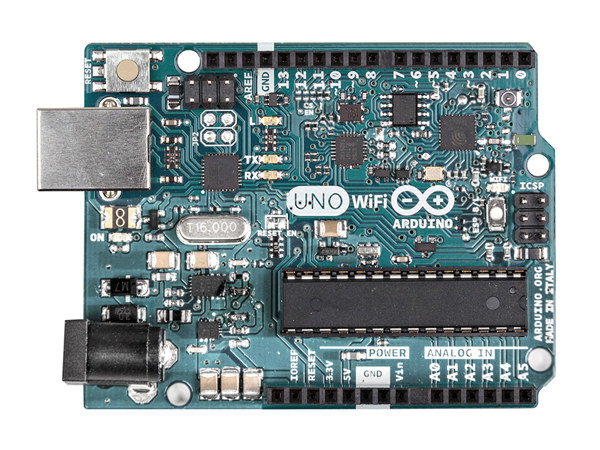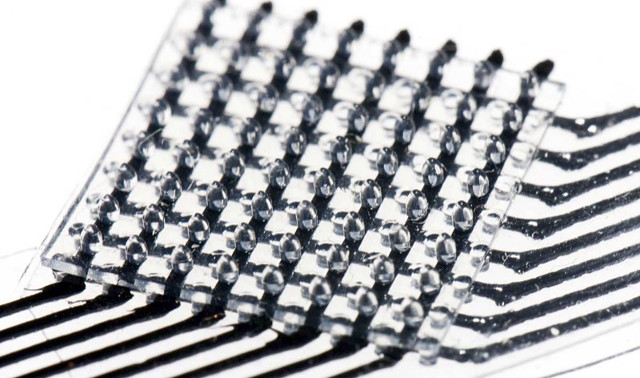Wio Link is a board based on ESP8266 WiSoC that is supposed to be easy to set up thanks to Grove modules – no breadboard and mesh or wires – and, as I first understood it, to program thanks to a drag-and-drop mobile app that does not require any actual programming. More advanced users can also use a RESTful API in Python, JavaScript, Node.js, PHP, Objective-C or Java. I’ve been sent a $49 Wio Link Starter Kit including the board, a USB cable, and six Grove modules to evaluate the kit. I’ll start by having a look a the kit, before experimenting with the Wio Link Android app. Wio Link Starter Kit Unboxing The kit is sent in a red plastic case. Wio Link board is lodged in the top cover, and other accessories are placed in bags in the main part of the case. Let’s check the board first. […]
Arduino Industrial 101 Board Powered by Atmel AVR and Atheros AR9331 WiSoC Targets Industrial IoT Applications
Arduino boards were first used by hobbyists, educators and their students, but in recent year more and more professional engineers have started to build prototypes with Arduino boards before moving to the design of the final product. Arduino Srl went further by designing an industrial grade board, namely Arduino Industrial 101, combining an Atmel AVR for real-time I/O control, and a Qualcomm Atheros AR9331 for WiFi connectivity. Arduino Industrial 101 (A000126) specifications: Arduino part MCU – Atmel ATmega32u4 AVR MCU @ 16 MHz with 32KB flash, 2.5 KB SRAM, 1KB EEPROM Digital I/O Pin – 20, with 7 PWM and UART Analog Input Pins – 12 DC Current per I/0 – 40 mA Operating Voltage – 5V Linux (LininoOS) part (101 Industrial LGA “Chiwawa” module) Processor – Atheros AR9331 MIPS processor @ 400 MHz System Memory – 64 MB DDR2 Storege – 16 MB flash WiFi – 802.11 b/g/n […]
OpenThread is an Open Source Implementation of Thread IoT Networking Protocol
Thread was announced about two years ago, as a new IP-based wireless protocol based on 6LoWPAN and 802.15.4 standards and targeting IoT applications. Nest Labs, an Alphabet company, has now released OpenThread open-source implementation of the networking protocol under a BSD license. The source code (C++) for OpenThread includes supports for End Device, Router, Leader & Border Router roles, and can be found on Github. The implementation is said to be OS and platform agnostic with a radio abstraction layer, have a small footprint, and implement all Thread networking layers, namely IPv6, 6LoWPAN, IEEE 802.15.4 with MAC security, Mesh Link Establishment, and Mesh Routing. To quickly get started, you may want to read the Examples README which explains how to build the code, start two nodes, and ping them. Interestingly, while the code is there for everybody to use, only paid members ($2,500 to $100,00) of the Thread group can […]
VoCore2 WiFi IoT Module Features Mediatek MT7628AN Processor
When Vocore WiFi module launched in 2014 on Indiegogo, it quickly became popular as at the time it was hard to find cost effective and small WiFi modules with GPIOs, and its compact Ethernet dock solution was also a hit. The developer has now been working on VoCore2 for several months, and recently announced a beta testing program. Vocore2 preliminary specifications: SoC – Mediatek MT7628AN MIPS processor @ 580 MHz System Memory – 64 or 128 MB DDR2 Storage – 16MB NOR FLASH, 1x SDXC via I/O pins Connectivity – WiFi 802.11n 2T2R up to 300 Mbps with either 2 u.FL connector or 1 u.FL connector + on-board chip antenna (Max signal output >19.5dbm peak); 2x 10/100M Ethernet interfaces via I/O pins I/Os – About 30 GPIOs multiplexed with 3x UARTs, 1x I2C, 1x I2S, 1x reference clock, 1x USB 2.0, 1x PCIe 1.1, 1x high speed SPI (40Mbps max), […]
LX IoT Cores Are Made for IoT and Wearables with Bluetooth LE, ANT+, 2G/3G, Sigfox, LoRa, and More
LX Group, an Australian company specializing in electronics design and embedded systems, has introduced three wireless modules for IoT and wearables which they call “LX IoT Cores”, and embeds various wireless protocol such as Bluetooth LE/Ant+, 2G/3G connectivity, WiFi, Lora, Sigfox, Taggle, etc… Let’s go though the main technical specs for the three modules, one of which it itself modular (hence the max and min size) depending on your requirements. LX Cellular Core (Right) MCU – STMicro STM32F217IGH6 ARM Cortex-M3 MCU @ 120 MHz with 1MB flash, 128kB RAM Storage – 1x micro SD card reader Communication Interfaces Radios – 2G/3G, WiFi, BLE, ANT+, provision for LoRa, Taggle, SigFox, optional GPS via daughter board Wired – USB, RS485, UART, SPI, I2C, Digital IO, ADC Sensors – Ambient Luminosity, accelerometer, gyroscope, magnetometer, temperature, humidity, air pressure, microphone USB – 1x micro USB port Misc – Reset and 2x user buttons, 2x […]
BeagleBone Air is a BeagleBone Black & Green Compatible Development Board with WiFi, Bluetooth LE, and Zigbee Connectivity
So far, if you wanted to add wireless connectivity to BeagleBone Black or BeagleBone Green, you’d either use a USB dongle, or a wireless CAPE, but Neuromeka, a Korean company has recently launched BeagleBone Air “IoT gateway” board, fully compatible with the two aforementioned boards (minus HDMI output), but adding on-board WiFi, Bluetooth LE, and Zigbee connectivity. BeagleBone Air specifications: SoC – Texas Instruments Sitara AM3358BZCZ100 Cortex A8 @ 1 GHz with NEON + PowerVR SGX530 GPU System Memory – 512 MB DDR3L @ 800 MHz Storage – 4GB eMMC + micro SD slot USB HS USB 2.0 client port (micro USB) HS USB 2.0 host poty (USB type -A) HS USB 2.0 host port on expansion header Connectivity 10/100M Ethernet (RJ45) WiFi 802.11 b/g/n via Realtek RTL8188US with SMA connector for antenna Bluetooth 4.0 LE via TI CC2541 with SMA connector for antenna Zigbee via TI CC2531 with SMA […]
Arduino UNO WiFi Board Combines Atmel ATmega328P MCU with ESP8266 SoC
Arduino.org (Arduino Srl) has launched Arduino UNO WiFi board, bringing Arduino (Atmel ATMega328P MCU) and ESP8266 together, and adding WiFi to the popular Arduino UNO board, while keeping all existing interfaces and headers. Arduino UNO WiFi (A000133) board specifications: Arduino part MCU – Atmel ATmega328 8-bit AVR MCU @ 16 MHz with 32 KB flash Memory, 2KB SRAM, 1KB EEPROM Digital I/O pins – 14, with 6 PWM and UART Analog Input Pins – 6 DC Current per I/0 – 40 mA Misc – Reset button Operating Voltage – 5 V ESP8266 part SoC – Expressif ESP8266EX Tensilica Xtensa LX106 processor @ 80 MHz Storage – 4MB SPI flash Connectivity – 802.11 b/g/n WiFi @ 2.4 GHz, wake up time < 2 ms; Antenna: PCB and IPX Misc – Bootloader button, WiFi LED Operating Voltage – 3.3 V Common specs USB – 1x USB device port Input Voltage – 5-12 […]
Tacterion Brings Capacitive Touch to Smart Clothing and Various Materials or Surfaces
With the advance of smartphones and other mobile devices, we’ve all been used to capacitive touch screens, but Tacterion, a German company born out of the Institute of Robotics and Mechatronics, at the German Aerospace Center, has designed “artificial skin” sensors that bring capacitive touch and other features to all sort of materials. Since the company wants to protect its IP they don’t disclosed much details about the inner working of their sensors: The patent protected technology is completely polymer-based. The technological principle are sensitive elements that measure based on transition resistivity: The more pressure is exerted on the polymer-based, electrically conducting elements, the lower the transition resistivity is, which is being measured continuously. Using our highly integrated high-speed readout electronics, a matrix of sensor elements can be combined to form sensitive surfaces. The readout electronics provides information regarding pressure and its distribution at a frame rate of 400 Hz. […]


